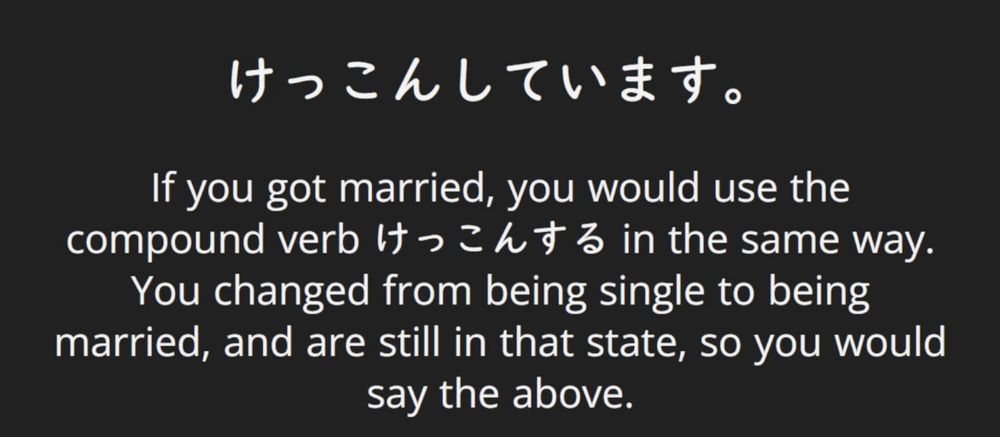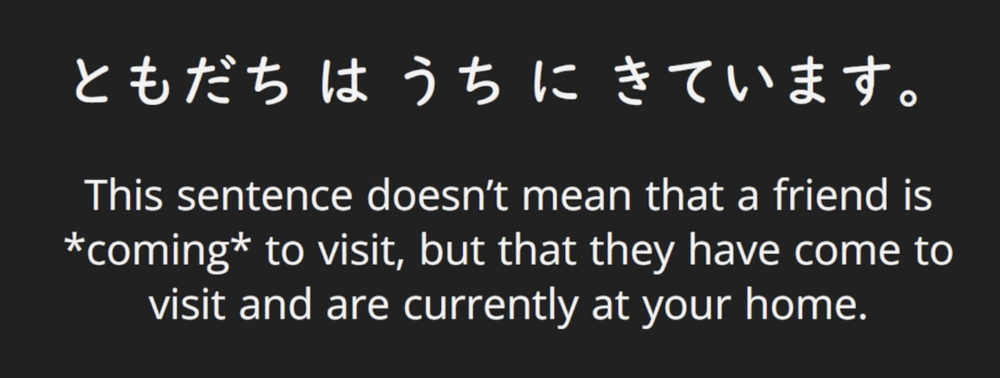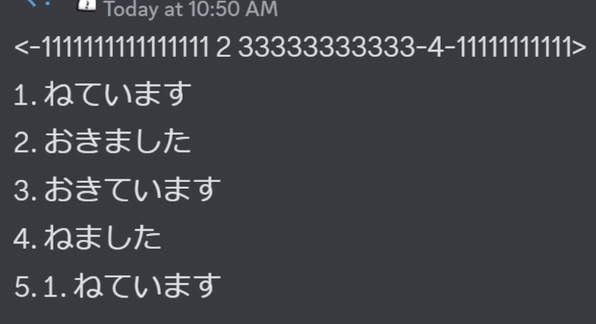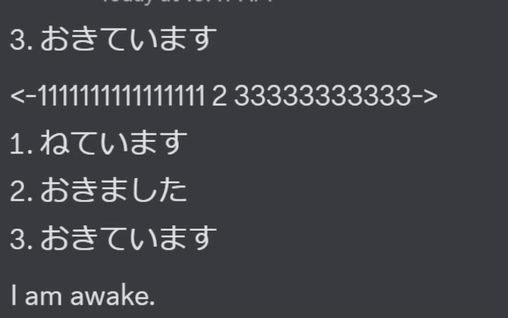掲示板 Forums - About ている
Top > 日本語を勉強しましょう / Let's study Japanese! > Anything About Japanese Getting the posts
Top > 日本語を勉強しましょう / Let's study Japanese! > Anything About Japanese
I was just revising ている again and was stuck on one its 3 uses that is :




& what does this mean? ;(


So, in Japanese, there are many verbs that describe instantaneous changes of state. The ている form is used for something to show that the change of state has happened and it continues to be in that state.
Examples are 開く and 閉まる. In English, you may say that a door is half-open, and it takes some time to be fully open, so the change isn't instantaneous. But in Japanese, a door is either closed or open, and the change from being closed to open happened in a single point in time. The past tense 開いた describes the instant something goes from being closed into the state of being open. After that, the door continues to be open, you use 開いている to describe that state.
ドアが閉まっている。 = The door is (currently) closed.
ドアが開いた。 = The door went from being closed to being open.
ドアが開いている。 = The change of state has happened, and now the door is currently open.
The last two screenshots in your post illustrate the timeline of events regarding the states described by the verb. Events that only happen for a moment is only written once, while events that span over a period of time is written multiple times.
I hope this makes it clear. Feel free for anyone to add to the explanation or give a correction. 
Edit: I recommend reading this Tofugu article: https://www.tofugu.com/japanes...
Teiru is the romanji of it right?
Now only learning hiragana and katana. So, I was trying to read it.
Thank you so muchhh!  So, the ている is also used to describe that the action is still in that form, like you said the door is open, I am married? And getting married is instantaneous because you became single to married in a moment?
So, the ている is also used to describe that the action is still in that form, like you said the door is open, I am married? And getting married is instantaneous because you became single to married in a moment?
Teiru is the romanji of it right?
Now only learning hiragana and katana. So, I was trying to read it.
YES!✅
 So, the ている is also used to describe that the action is still in that form, like you said the door is open, I am married? And getting married is instantaneous because you became single to married in a moment?
So, the ている is also used to describe that the action is still in that form, like you said the door is open, I am married? And getting married is instantaneous because you became single to married in a moment? Yep, you got it right!